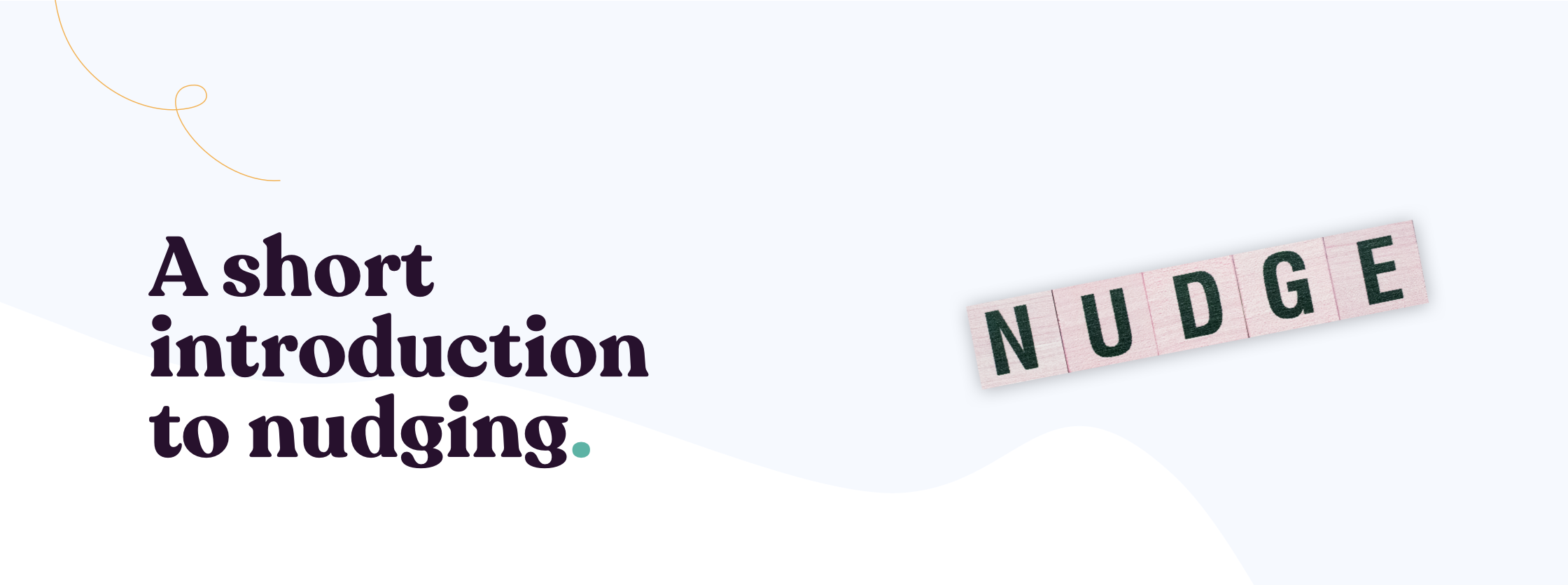A short introduction to 'nudging'
Chances are high you have heard of the term ‘nudging’ before. But did you also know that it’s part of a bigger concept called Nudge theory, and that it's not the same as just a notification? In this blog, you’ll learn more about the theory behind nudging and how and where nudges can be applied.
Origin of the nudge concept
Let’s have a look at the origin of the nudge concept first. Behavioural economist Richard Thaler and legal scholar Cass Sunstein can be credited for the popularisation of the concept and theory of nudging. In their 2008 book ‘Nudge: Improving Decisions About Health, Wealth and Happiness’ they introduced the world to nudging and how it’s all about decision-making and how we can make better choices. The book was named one of the best books of 2008 by The Economist, and influenced British and American politicians. Nowadays there are even nudge units all around the world that use nudge theory to improve decision making in different areas.
Nudge Theory
Originally the theory was applied in US ‘behavioural economics’, but now it’s applied internationally to enable and encourage change in people, groups or even on an individual level. Nudge theory proposes positive reinforcement and indirect suggestions as ways to influence people’s behaviour and decision making, encouraging positive, helpful decisions for individuals and society.
This makes the theory relevant in many fields, such as leadership, change management, and self-development. Over the years, nudge principles and techniques have become more and more significant in communications, marketing, sales, leadership, etc. Basically, in any area of human interaction where one seeks to influence people or individuals.
Nudges
Key to the Nudge theory are ‘nudges’, which naturally also originate from behavioural economics and sciences. Nudges can be described as ways or methods to influence people’s behaviour and decision making in a predictable way. Basically, nudges give individuals the choice on what they want to do, while helping them make better decisions to achieve a desired outcome. Take a quick look at a simple example to illustrate a nudge and what makes it different from other methods of communication.
Let’s say a school wants its students to develop a more healthy lifestyle. The school can for example choose to ban all junk food from the cafeteria’s offering, but can also opt to put healthy foods, such as vegetables and fruits, at eye level. The former is not an example of a nudge as individuals are not left with the choice on what they want to do, they’re just told or instructed on what they need to do. Contrary to the former, the latter is a perfect example of a nudge, as it tries to influence the behaviour of students by leaving the decision in their own hands.
As can be deduced from the example, nudges are more subtle and different than other methods, such as direct instruction, legislation, enforcement, etc. to achieve change.
Nudging in business
Nudging found its way in business in 2017, when Richard Thaler received the Nobel prize in economics. This led to a significant boost of applying nudges in the corporate world and it’s now used internationally for managing people, sales, operations, and finances. In the early years nudging has proved its effectiveness in public policy, and now its huge potential has been recognised in the fields of sales and marketing, where it can draw people towards the desired outcome, for example successfully completing a new training program, adopting a new tool or processes or even improve performance.
Getting started with nudging
Anyone can utilise the power of nudging to help people towards improving their thinking and decisions. It all really comes down to understanding people’s behaviour and what drives them to make certain decisions. If you would like to get started with nudging in your organisation, you should check out our step-by-step guide that enables you to use nudges and boost your organisation's sales.
Feel free to contact us if you want to learn more about how you can use nudging to improve sales in your organisation or if you want more information regarding nudging in business.




